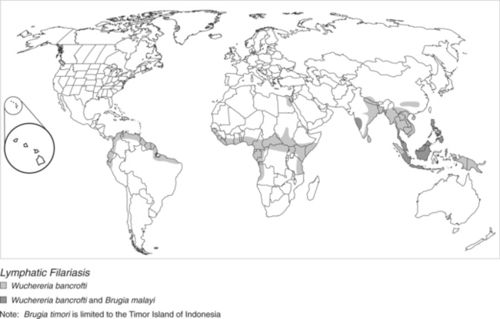Lymphatic filariasis
ナビゲーションに移動
検索に移動
| Navigation Menu |
| General issues of Vaccine | |||||||
|---|---|---|---|---|---|---|---|
|
| General issues of Travel med. | ||||||||
|---|---|---|---|---|---|---|---|---|
|
| Immunology | |||||||
|---|---|---|---|---|---|---|---|
|
| Epi & Stats | ||||||||||||
|---|---|---|---|---|---|---|---|---|---|---|---|---|
|
| Virus | |||||||||||||||||||
|---|---|---|---|---|---|---|---|---|---|---|---|---|---|---|---|---|---|---|---|
|
| COVID-19 | |||||
|---|---|---|---|---|---|
|
| Bacteria | ||||||||||||||||||||||
|---|---|---|---|---|---|---|---|---|---|---|---|---|---|---|---|---|---|---|---|---|---|---|
|
| Rickettsia | |||||
|---|---|---|---|---|---|
|
| Protozoa | ||||||||||||||||
|---|---|---|---|---|---|---|---|---|---|---|---|---|---|---|---|---|
|
| Fungi | |||||||
|---|---|---|---|---|---|---|---|
|
| Nematode (roundworm) | |||||||||||||||||
|---|---|---|---|---|---|---|---|---|---|---|---|---|---|---|---|---|---|
|
| Trematode (fluke, distoma) | |||||||
|---|---|---|---|---|---|---|---|
|
| Cestode (tapeworm) | ||||||
|---|---|---|---|---|---|---|
|
| Medical Zoology | ||||||||
|---|---|---|---|---|---|---|---|---|
|
- ヒト体内でadultから生まれたmicrofilariaは吸血で蚊に移行し,蚊の体内で3回moltを繰り返してL3 larvaeに至る.
- L3は1.7mmまで体長を増し,吸血によって蚊の体外に放出され,蚊が生じた穿刺口等から皮内に侵入する
- 1.7mmもの体長のlarvaeがどうやって体長10mmに満たない蚊の体内で共存できるのか?
- Onchocerciasisのヒト体内の病態生理はmicrofilariaによるが,lymphatic filariasisはadultによる.
- Lymphatic filariasisでリンパ浮腫を生じている患者の下肢をエコーで観察すると,拡張したリンパ管内で蠢くadult filariaを観察できる.
Filarial dance under ultrasonography
distribution
Brugia malayi
| Intermediate host | |
|---|---|
| Category | mosquito, female |
| Latin | Mansonia spp., Aedes spp. |
| Inward infection | blood-feeding of human |
| Organ | midgut, thoracic muscle, proboscis |
| Reproduction | |
| Course |
|
| Detection | |
| Outward transmission | blood-feeding of human through proboscis |
| Definitive host | |
|---|---|
| Category | HUMAN |
| Latin | |
| Inward infection | blood-feeding by mosquito |
| Organ | lymphatics, blood stream |
| Reproduction | sexual |
| Course |
|
| Detection |
|
| Outward transmission | blood-feeding by mosquito |
Wuchereria bancrofti
| Intermediate host | |
|---|---|
| Category | mosquito, female |
| Latin | Aedes spp., Anopheles spp., Culex spp., Mansonia spp., Coquillettida juxtamansonia |
| Inward infection | blood-feeding of human |
| Organ | midgut, thoracic muscle, proboscis |
| Reproduction | |
| Course |
|
| Detection | |
| Outward transmission | blood-feeding of human through proboscis |
| Definitive host | |
|---|---|
| Category | HUMAN |
| Latin | |
| Inward infection | blood-feeding by mosquito |
| Organ | lymphatics, blood stream |
| Reproduction | sexual |
| Course |
|
| Detection |
|
| Outward transmission | blood-feeding by mosquito |
mass drug administration MDA
- Diethylcarbamazepine (DEC) 6mg/kg only once for all inhabitant in endemic area
- repeated several consecutive years
